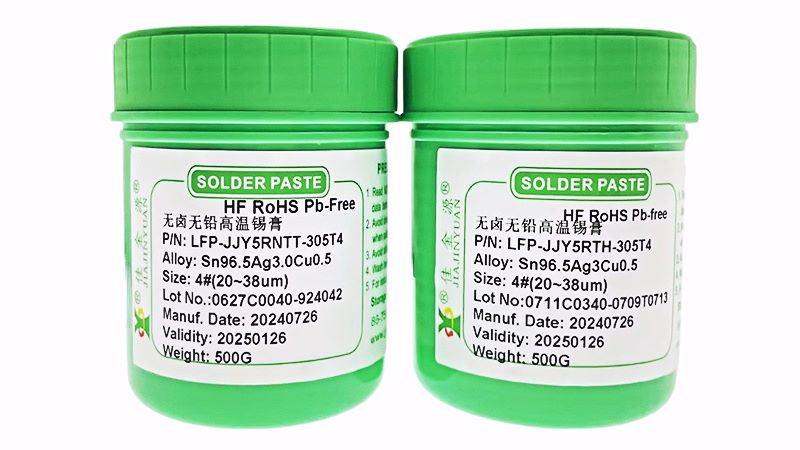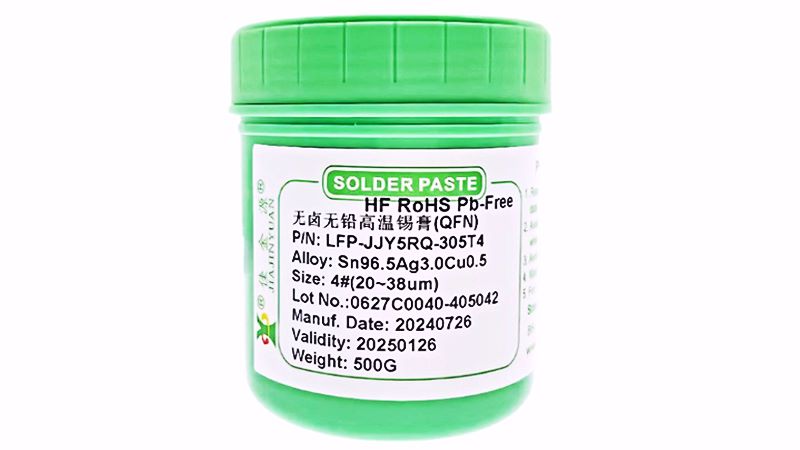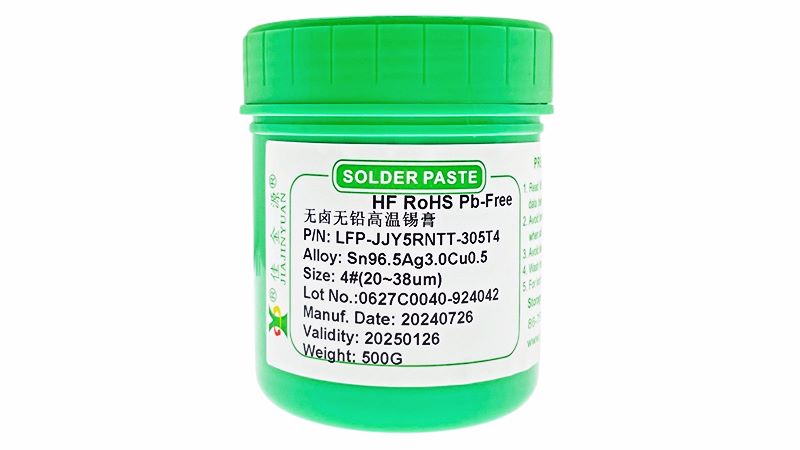Earlier, I shared some valuable information about solder bars with you all. I wonder if you know how many more classifications there are. Types of solder bars: Standard solder bars, high-temperature solder bars, copper-containing solder barsLead-free tin barMatte solder rods, low-temperature solder rods, silver-containing solder rods, and other custom-made solder rods. Below, JJY solder Paste Manufacturer will popularize some classification knowledge and uses:

1. Standard solder bar: Used for wave soldering and hot-dip soldering, with a working temperature of220℃-260℃It has the following advantages:
1Excellent wettability reduces the occurrence of poor solder joints;
2There are very few harmful impurities, which can improve the diffusion power and enhance the fluidity.
3The solder joints are relatively bright.
4The liquid surface is bright and there is little tin slag.
5The quality is consistent and the soldering effect is stable.
2. High-temperature anti-oxidation solder rods: High-temperature anti-oxidation solder rods are used at a soldering furnace temperature of400℃-500℃This solder bar is a product specially manufactured by the electronic manufacturer. It is refined based on the standard solder bar with a special formula, which can effectively enhance the high-temperature oxidation resistance. It is mainly supplied to the electronic component building formwork containing enameled wire,Coolers (such as transformers, inductors, coils, relays, demagnetization coils, etc.) are tinned for use.
High-temperature anti-oxidation solder rods have the following advantages:
1When operating at high temperatures in the soldering furnace, the liquid surface is bright, and there is no need to scrape the tin slag on the soldering surface each time the operation is carried out. It has good workability and high production efficiency, thereby increasing the output.
2The components are easy to be tinned and the base plate hardly adheres to tin slag.
3After tin stamping, the surface of the pins is bright, smooth and has a good appearance.
4There is less tin slag, which can reduce material costs.
Iii. Common Solder Rods: Common solder rods are400℃When working at the above temperatures, yellow or brown oxides will form on the liquid surface of the tin furnace within a short period of time. Before each hot stamping, the operator needs to scrape off the tin residue on the tin surface. After hot stamping, the tin residue adheres to the base plate and needs to be manually brushed off. This results in poor operability, low production efficiency and waste of solder.
The advantages of common solder rods:
1The tin bars are made of high-purity electrolytic solder, which reduces harmful impurities and effectively avoids welding problems such as bridging, sharp drawing and poor wettability caused by harmful impurities.
2The tin strip has good fluidity, and the tin coating is uniform and fast. Cable protection pipe,Bentonite waterproof blanket The temperature of the tin furnace is lower. Slow down the rate at which solder leaching occurs, effectively suppress the dissolution rate of copper on the circuit board, and extend the service life of solder in the furnace.
3The solder joints of the tin bars are bright and there is very little tin slag, which can reduce product costs and improve production efficiency.
4Effectively prevent the phase transformation and whisker phenomenon of tin in soldering. Avoid problems such as embrittlement of solder joints after welding and tripping, short circuits and noise in electronic circuits caused by whiskers. Especially inSMC/SMDAfter miniaturization, more attention should be paid to the interference of whiskers.
For more knowledge about solder bars, wires and pastes in soldering, please keep learning and growing together with JJY Solder Paste Manufacturer.





 Tel:+86 0755 88366766
Tel:+86 0755 88366766 Phone:+86 18938660310
Phone:+86 18938660310 Email:sales@jjyhanxi.com
Email:sales@jjyhanxi.com Address:13/F,12/F, Building No. B,Qinghu Technology Park,Qingxiang Rd.,Qinghu Community, Longhua Subdistrict,Longhua District,Shenzhen City,GUANGDONG Province,P.R.C.(518027)
Address:13/F,12/F, Building No. B,Qinghu Technology Park,Qingxiang Rd.,Qinghu Community, Longhua Subdistrict,Longhua District,Shenzhen City,GUANGDONG Province,P.R.C.(518027) Guangdong Public Security Backup 44030902002666 name
Guangdong Public Security Backup 44030902002666 name
 WeChat
WeChat WeChat official account
WeChat official account
